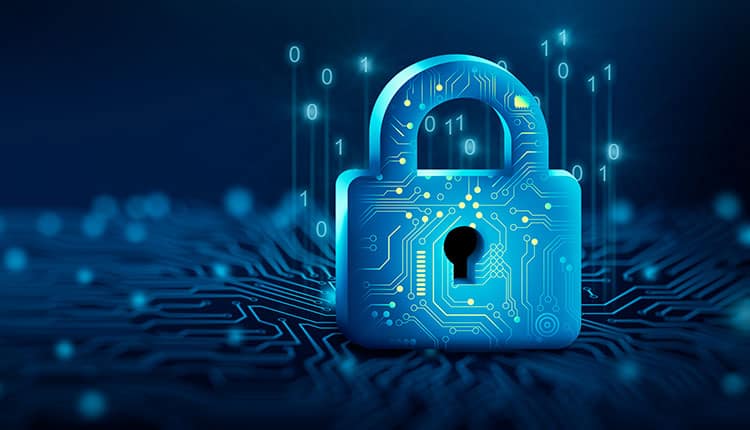In today’s interconnected digital landscape, where data breaches have become all too common, the need for robust cybersecurity measures has never been more crucial. Traditional security models have proven inadequate in protecting sensitive information from increasingly sophisticated cyber threats. As a result, Zero-Trust Security has emerged as a vital framework that challenges the conventional notion of trust within networks and emphasizes a proactive and holistic approach to safeguarding data. IT Support 24/7 team specializes in providing zero trust security solutions to businesses.
According to research by Precedence Research, the global zero trust security market size reached USD 25.12 billion in 2022, and it is expected to hit around USD 118.5 billion by 2032, poised to grow at a CAGR of 16.78% by 2032. This survey shows the growing importance of zero trust security in today’s modern business world. So let’s explore what is zero trust security and the growing importance of implementing zero trust data security in businesses.
7 Reasons Why is Zero Trust Important in Era of Data Breaches
- Mitigating Threats
In the age of data breaches, zero trust security solutions have become increasingly important for organizations looking to mitigate threats and protect sensitive information. Unlike traditional security models that rely on perimeter defenses, zero-trust security operates under the assumption that no user or device should be automatically trusted. This approach requires continuous verification and authentication of users, devices, and applications, regardless of location or network connection.
With zero trust security, organizations can significantly reduce the risk of unauthorized access and minimize the potential impact of data breaches. Businesses can better safeguard their valuable data in an ever-evolving threat landscape through strict access controls, multi-factor authentication, and advanced monitoring and analytics.
- Enhanced Data Protection
In today’s day and age, protecting data is paramount due to the frequency of data breaches. A reliable framework for achieving this goal is zero-trust security. This framework operates under the assumption that no user or device can be trusted by default, and continuous verification and authorization are required for access to sensitive data.
By implementing zero-trust security measures, organizations can better protect their data and ensure the privacy and security of their customers’ information. With the growing threat of cyberattacks, adopting a zero-trust security model is crucial for businesses looking to safeguard their sensitive data in today’s digital landscape.
- Continuous Monitoring
With the constantly increasing threat of data breaches, it is crucial to adopt a zero-trust security strategy that includes continuous monitoring. Relying solely on perimeter defenses is no longer effective in the face of complex cyber threats. To ensure security, it is necessary to scrutinize network activity, user behavior, and system vulnerabilities for any indications of anomalies or potential security breaches.
Organizations can quickly identify and respond to suspicious activity by constantly monitoring and analyzing data, minimizing the risk of data breaches and unauthorized access. Through continuous monitoring, organizations can maintain a proactive approach to security and ensure that their sensitive data is always protected.
- Reduced Attack Surface
In this age of frequent data breaches, zero-trust security has become more important than ever. By implementing zero-trust security, the attack surface can be significantly reduced. This is because traditional security measures that depend on network perimeters assume trust in all internal elements. As a result, organizations are exposed to internal threats.
With zero trust security, every user and device is treated as untrusted, regardless of location or network connection. This approach greatly reduces the attack surface by enforcing strict access controls and authentication protocols at every network level. By implementing a zero-trust security model, organizations can better protect their sensitive data and reduce the risk of breaches from both external and internal threats.
- Better Architecture Flexibility
Zero trust security provides enhanced architecture flexibility to businesses. Unlike traditional perimeter-based security models, which assume that internal networks can be trusted, zero-trust security operates on the principle of “never trust, always verify.” Every user and device attempting to access a network or resource must be authenticated and authorized, regardless of location or network connection.
By adopting this approach, organizations can achieve greater flexibility in their network architecture, allowing for more secure access control and reducing the risk of unauthorized access or data breaches. In an era where cyber threats are constantly evolving and becoming more sophisticated, the enhanced architecture flexibility safeguards sensitive data and protects against potential attacks.
- Enhanced Threat Detection
Zero-trust security is a comprehensive and proactive approach that recognizes the potential vulnerability of every network, device, and user, and never assumes trust by default. It is absolutely imperative that you promptly adopt this approach to ensure the safety and security of your systems and data.
Enhanced threat detection technologies, such as advanced analytics and artificial intelligence, play a crucial role in identifying and mitigating potential threats in real-time. By continuously monitoring network traffic and user behavior, zero-trust security systems can quickly detect anomalies and take appropriate action to prevent unauthorized access or data breaches.
- Regulatory Compliance
Regulatory compliance has become a growing concern for businesses in the age of data breaches and increasing cybersecurity threats. A zero-trust security framework can help organizations meet regulatory requirements and protect sensitive data. Compliance with HIPAA and PCI-DSS regulations is crucial for businesses operating in various industries.
Zero-trust security focuses on verifying every user and device attempting to access the network or data, regardless of their location or previous trust status. This approach ensures that only authorized individuals can access sensitive information and helps organizations demonstrate compliance with regulatory standards. By adopting a zero-trust security model, businesses can better protect their data, maintain regulatory compliance, and mitigate potential risks associated with data breaches.
Conclusion
With data breaches becoming more frequent, organizations must take proactive steps to ensure cybersecurity. Zero trust security is an effective solution that challenges traditional trust models with constant verification and strict access controls. Organizations can successfully prevent, detect, and respond to cyber threats by focusing on least privilege, micro-segmentation, and behavioral analytics. As technology advances, zero-trust security remains a reliable safeguard against data breaches, protecting valuable data and maintaining stakeholder confidence.







